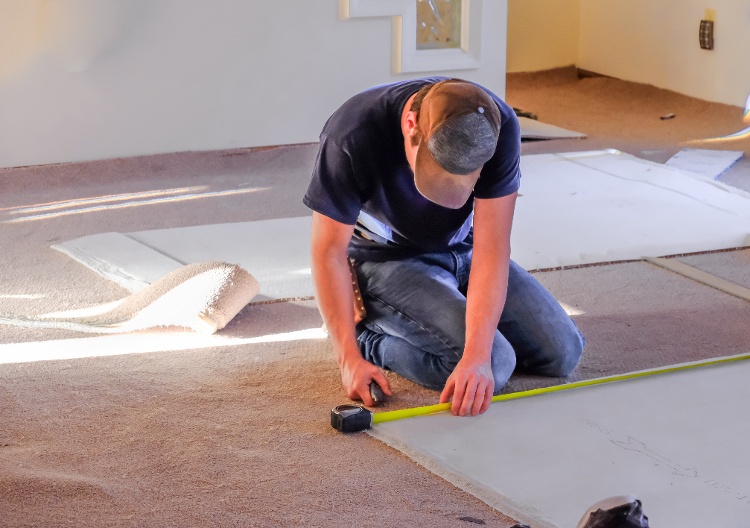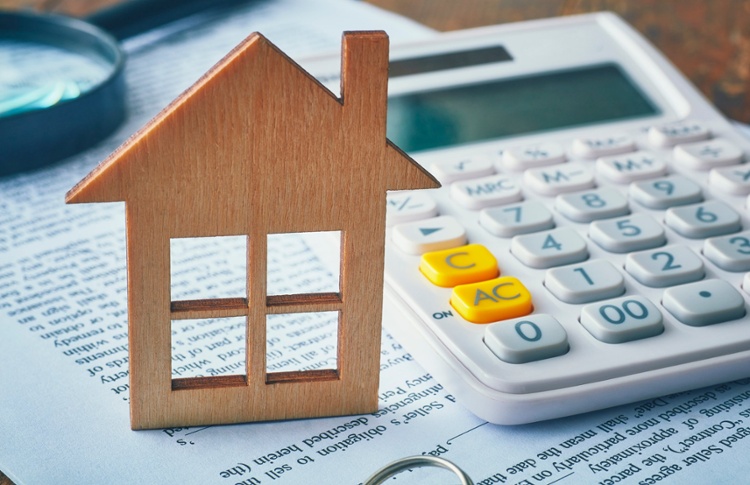Rental property requires both repairs and improvements to keep the property in good condition and increase rental property value. At first glance, it might seem like both activities do the same thing. But for tax purposes, there’s a big difference between how repairs and improvements are deducted.
Keep reading to learn how to use repair and improvements deductions to reduce your taxable net income, and see if you qualify to fully deduct improvements in the year the work is done to minimize your taxes even more.

Difference Between Repairs and Improvements
A repair maintains the current condition of your property, while an improvement has a much greater effect on the property value. While both repairs and improvements are tax deductions for rental property investors, they’re reported in different ways.
Repair
A repair is something that keeps the rental property in an ordinarily efficient operating condition, according to the IRS instructions for Schedule E.
Another way of thinking about a repair or routine maintenance expense is that it does not add value to the property or extend its useful life. Instead, a repair restores the property to the way it originally was.
Repair expenses can be deducted from your rental property income the year that the cost is incurred. Examples of common repairs to a rental property include:
- General painting
- Appliance repairs
- HVAC repairs or seasonal inspection work
- Fixing a water heater
- Replacing a small patch of carpet or having the carpet cleaned
- Refinishing a wooden floor, or replacing some cracked floor tiles
- Repairing glass in a window, replacing a plumbing fixture, or repairing a door lock
- Minor electrical and plumbing repairs, such as changing out an unsafe light switch or repairing a slow water leak in the bathroom sink
- Removing a dent from the garage door
- Structural repairs made to the roof or foundation of the house
- Replacing a malfunctioning smoke detector or security camera
Improvement
An improvement is something that adds value or extends the useful life of a rental property. Whereas repairs restore something that broke to its original condition, improvements add value for future years.
The legal resource website Nolo.com suggests a good way to think about the difference between repairs and improvements is by using the BAR acronym for real estate:
- B is for Betterment
- A is for Adaptation
- R is for Restoration
So, BAR = Improvement = Depreciation.
Improvements for rental property must be depreciated over their useful life. IRS Publication 527 explains in detail how depreciation for improvements on rental property works. For example, appliances may be depreciated over five years, while improvements such as replacing a backyard fence have a 15-year depreciation period.
Examples of common improvements to a rental property include:
- Painting included as part of a major updating or restoration project
- Replacing appliances such as the refrigerator or washer and dryer
- Installing a new HVAC system
- Replacing the water heater
- Putting in entirely new carpet or flooring that has worn out due to normal wear and tear or if the tenant destroyed the carpet
- Replacing windows in the entire house, updating the plumbing system, or installing all-new hardware on the doors and windows
- Major electrical systems and plumbing improvements, such as replacing aluminum wire with copper or replacing old cast iron water pipes with copper or galvanized steel
- Installing a new garage door
- Replacing the entire roof or renovating the basement
- Installing a security system and other state-of-the-art property technology with smartphone apps to help attract Millennial and Gen Z renters

How Repairs, Improvements, and Depreciation Work
Now let’s look at how deductions for repairs and improvements work in the real world for a rental property investor.
You were able to purchase a single-family rental property for a great price on the Roofstock Marketplace, but the tradeoff is that the place needs some fixes. The house is turnkey with a tenant already in place. You want to make sure the current tenant knows you’re a new landlord who cares as much about the tenant as the condition of the property, something that the seller wasn’t able to do.
Even though you have to put in some additional money up front, because you’re a buy-and-hold real estate investor you’re comfortable that the improvements you need to make will add value to the property over the long term and also allow you to raise the rent.
We’ll assume you purchased the single-family rental for $150,000 that rents for $1,500 per month. The property management fee is $150 per month, and your mortgage is $643 per month (PITI). Routine repairs for the first year were $2,000 and you spent $5,000 on new appliances for the tenant.
Deducting for Repairs
At the end of the first year, your P&L would look like this:
- Rental income = $18,000
- Property management = $1,800
- Repairs and maintenance = $2,000
- Mortgage interest, insurance, and property taxes = $5,119
- Net income (pre-tax before depreciation) = $9,081

Depreciation Deduction
To calculate the taxable net income, we’ll first deduct the depreciation expense for the appliances. According to IRS Publication 527, appliances have a useful life of 5 years, so we can deduct $1,000 per year up to five years:
- Net income = $9,081
- Appliance improvement depreciation deduction = $1,000
- Net income after appliance depreciation = $8,081
There’s one more depreciation deduction we can take, and that’s for the investment property itself.
The IRS assumes residential rental property has a useful life of 27.5 years, so we can deduct 3.636% of the property value (but not the lot value) over the time period. Assuming the lot is worth $30,000, we can deduct another $4,356 ($120,000 x 3.636%) each year to arrive at the taxable net income for the property:
- Net income after appliance depreciation = $8,081
- Property depreciation = $4,356
- Taxable net income = $3,725
Thanks to the deductions for repairs and depreciation, we’ve reduced the taxable net income by more than 40%.
Tax Deductions Resources for Repairs and Improvements
No rental property investor wants to pay more in taxes than is legally necessary. The first step in expensing all that you can is to keep track of your rental property expenses down to every penny.
Track Repairs and Improvements Online
One of the best ways to keep track of the financial performance of your rental property is with Stessa, a free online property management software system for real estate inventors.
The system offers a variety of features including automated income and expense tracking and creates the paper trail for income and receipts you’ll need for accurate tax reporting. Stessa helps rental property owners stay organized and access important documents in seconds, not hours, so you can manage and grow your portfolio with confidence.
Resource Links for Repair and Improvement Deductions
Here’s a summary of the IRS publications and other resources mentioned throughout this article, along with a few more links to information that every investment property owner should know:
- IRS Instructions for Form 1040 Schedule E
- IRS Publication 527 Residential Rental Property
- IRS Overview for Small Businesses
- IRS Publication 946 How to Depreciate Rental Property
Safe Harbor Rules for Repair and Improvement Deductions
Sometimes it can be difficult for a small real estate investor to figure out the difference between a repair and an improvement. That’s why the IRS developed the Safe Harbor for Small Taxpayers (SHST).
The SHST allows real estate investors to deduct all annual expenses for repairs and improvements for a rental property on Schedule E. If you qualify for the SHST, you don’t have to worry about trying to figure out the difference between a rental property repair or improvement.
However, there are three limitations to the SHST:
- Unadjusted property basis cannot exceed $1 million
- Annual expenses for repairs and maintenance cannot exceed the lesser of $10,000 or 2% of the building’s unadjusted basis
- Annual gross income for the landlord must be less than $10 million for the three preceding tax years
Visit the IRS online guide for Tangible Property Regulations for the latest rules and FAQs on rental property repairs and improvements, and the de minimis safe harbor election.
Is it Better to Expense or Depreciate?
The answer to this question depends on the unique needs of each individual real estate investor. A landlord who wants to expense as much as possible to minimize taxable income can do so using the SHST, provided all three limitations are met.
Rental property owners who aren’t that concerned with deducting as much as possible in a single year can use the depreciation deduction to reduce taxable net income for several years. If you’re not sure which option is right for you, consider speaking to your accountant or financial advisor for an unbiased professional opinion.










